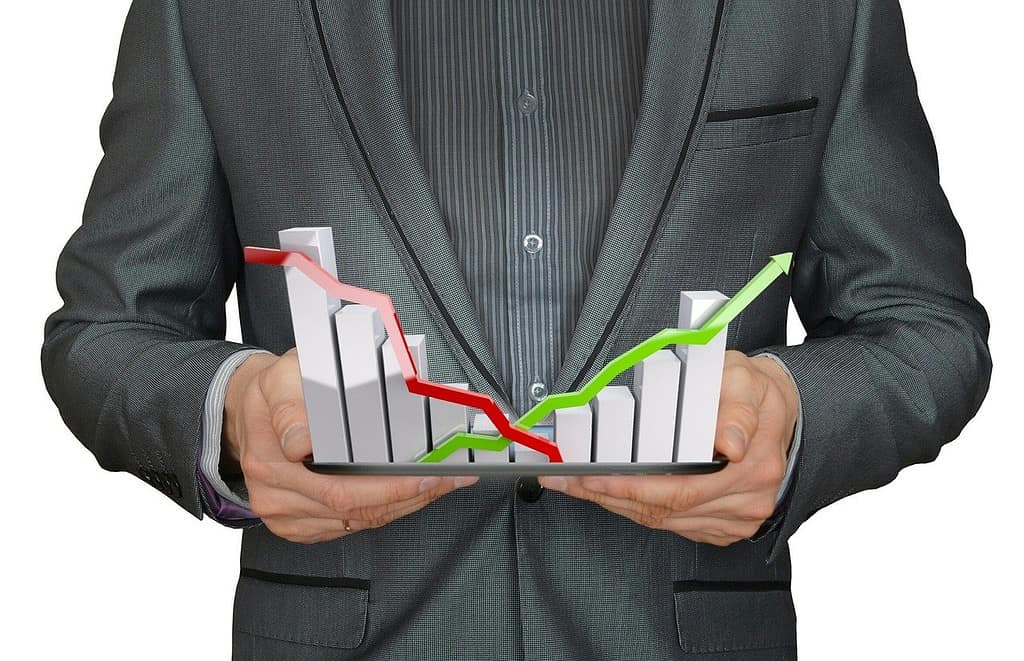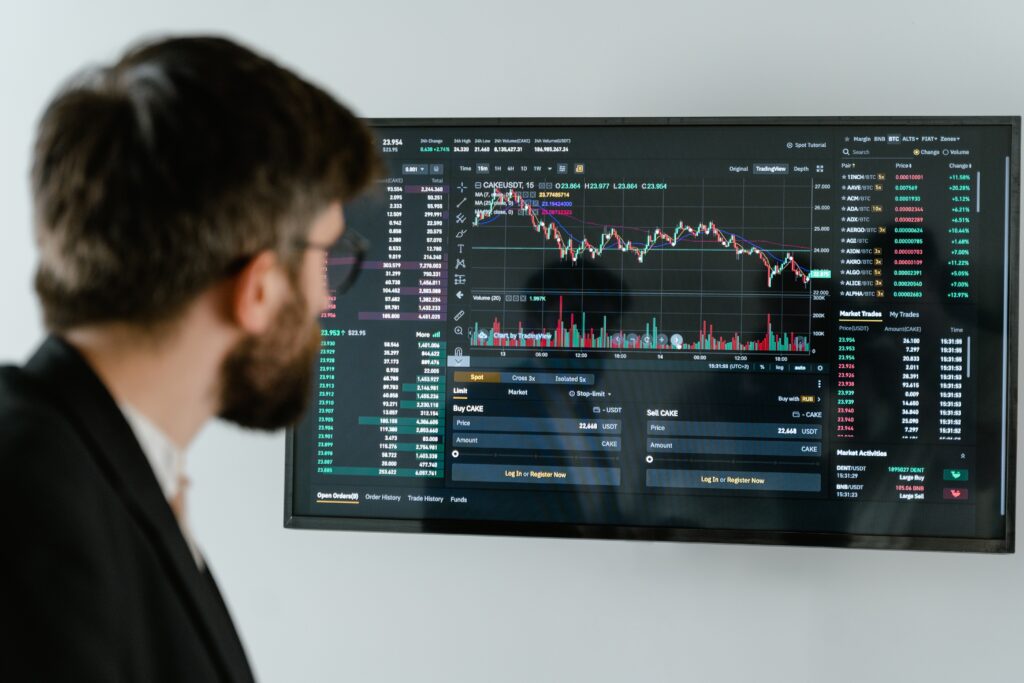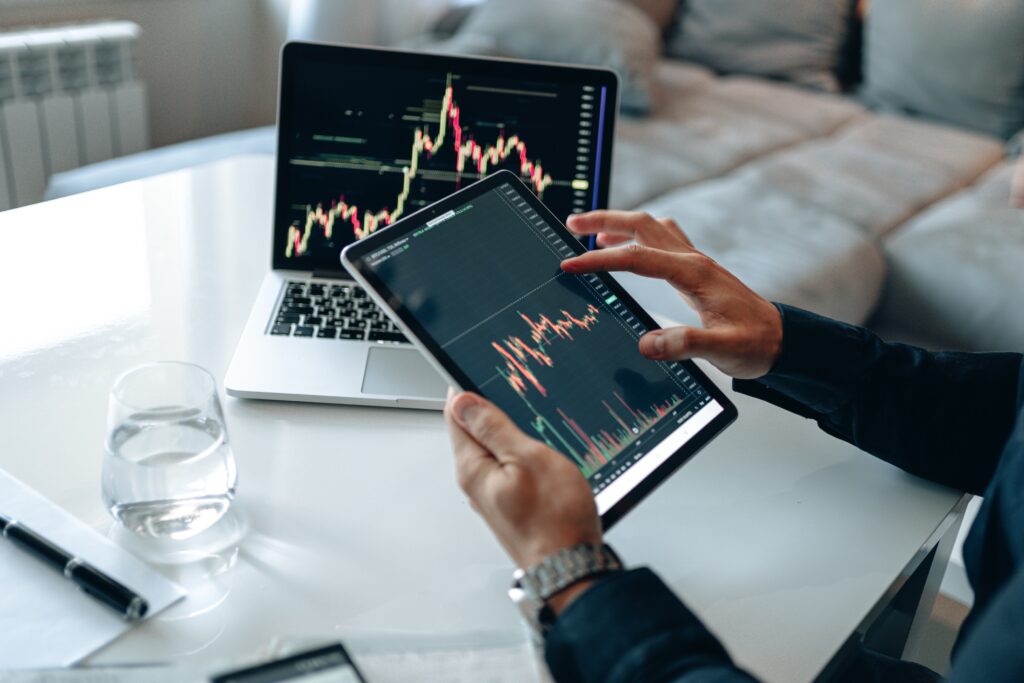Table of Contents
- Benefits of Opening a Forex Trading Account
- Understanding Leverage and Margin in a Forex Trading Account
- Different Types of Forex Trading Accounts
- Using Technical Analysis to Trade Forex with Your Trading Account
- Risk Management Strategies for Your Forex Trading Account
- Understanding the Basics of Fundamental Analysis for Forex Trading
- Tips for Choosing the Best Forex Broker for Your Trading Account

Forex trading is an attractive way to participate in the global financial markets. A Forex trading account allows you to buy and sell currencies and benefit from changes in their values. Forex trading accounts can be opened with a broker, and you can trade on different currency pairs. In order to trade in the Forex market, you must have a Forex trading account. This account will allow you to place trades, manage your investments, and monitor your progress. Additionally, you will need to choose a broker that can provide you with access to the best trading platforms and tools. With the right Forex trading account, you can gain access to the world’s largest financial market and make profits.
How to Choose the Right Forex Trading Account for Your Needs
Are you ready to start trading forex? Before you jump into the world of currency trading, it is important to choose the right forex trading account for your needs. Whether you’re a beginner or a seasoned trader, you should take the time to evaluate the different options available to find the one that best fits your trading style, goals, and risk tolerance. First and foremost, consider what type of trading you plan to do. Do you want to engage in short-term scalping or day trading, or are you hoping to execute longer-term swing trades? Knowing your trading style will help you determine which account type is best for you. Next, evaluate the fees associated with each option. Forex trading platforms typically charge a commission or spread on each trade. The amount of the fee varies by broker, so it’s important to compare the fees before you commit to a particular platform. In addition to fees, you should consider the minimum deposit required to open an account. Many brokers require a minimum initial deposit, so it’s important to consider the amount you’re comfortable investing. Finally, take a look at the features and tools offered by each platform. Do you want access to automated trading tools, advanced charting capabilities, or real-time news feeds? Make sure the platform you choose offers the features and tools you need to be successful. Choosing the right forex trading account can be a daunting task, but it doesn’t have to be. By taking the time to evaluate the different options and find the one that best suits your trading style, goals, and risk tolerance, you can set yourself up for success. So don’t wait – get started on your journey to financial freedom today!
Benefits of Opening a Forex Trading Account
Trading Forex is a great way to make money and it’s becoming increasingly popular. Whether you’re a professional trader or just getting started, opening a Forex trading account can be a great way to take advantage of the markets. Here are some of the benefits of opening a Forex trading account:
1. Access to global markets: With a Forex trading account, you’ll have access to some of the world’s most liquid financial markets, with tradeable currencies from around the world. This gives you the opportunity to diversify your portfolio and take advantage of global opportunities.
2. Low transaction costs: Forex trading accounts are some of the most cost-effective trading accounts available, with extremely low transaction costs. This means you can get more out of your trading capital, potentially increasing your returns.
3. Leverage: Leverage is one of the key benefits of Forex trading. It allows you to control large amounts of capital with only a small amount of your own money. This can be a great way to maximize your returns on a small investment.
4. Expert advice: Forex brokers can provide you with valuable information and advice about the markets and trading strategies. This can be invaluable for both experienced and novice traders.
5. No commissions: Unlike other types of trading accounts, Forex trading accounts don’t charge commissions. This makes it an ideal way to get started trading without paying excessive fees. Opening a Forex trading account can be a great way to take advantage of the many opportunities the markets have to offer. With access to global markets, low transaction costs, leverage, expert advice, and no commissions, it’s easy to see why Forex trading is becoming increasingly popular. So why not open a Forex trading account today and start taking advantage of the markets?
Understanding Leverage and Margin in a Forex Trading Account
When you open a Forex trading account, you will come across terms such as leverage and margin. Understanding what they mean and how they work is critical to successful trading. Leverage is essentially the ability to control a large amount of currency with a relatively small amount of capital. In a Forex trading account, leverage is expressed as a ratio, such as 50:1, meaning that you can control a position worth 50 times the amount of your own capital. Leverage can be a powerful tool in Forex trading, as it allows you to make larger trades than you would otherwise be able to make. Margin is the amount of capital that you must have in your account in order to open and maintain a Forex trade. When trading Forex, you must have enough equity in your account to cover the margin requirement for your trades. Leverage and margin work hand in hand. Leverage allows you to make larger trades with less capital, while margin requires you to have enough capital in your account to cover the costs of the trading position. When used wisely, leverage and margin can be powerful tools in Forex trading. They can help you make larger trades while controlling risk. However, it is important to remember that with greater potential rewards come greater risks, so it is important to understand how leverage and margin work and to only use them responsibly.
Different Types of Forex Trading Accounts
When it comes to Forex trading, there are a variety of different accounts to choose from. Each type of account offers different benefits and features, so it’s important to understand what’s available and how it can help you reach your trading goals. Whether you’re a beginner or a more experienced trader, there’s a type of account that will be the right fit for you. The most common type of account is the standard account. This type of account is suitable for all levels of traders, from beginners to experienced traders. It offers a wide range of features such as low initial deposit requirements, low spreads, and access to a variety of trading platforms. For those who are looking for more advanced features, a mini account may be a good option. This type of account allows traders to trade in smaller lots, which can be helpful for those who want to practice or test their strategies without risking too much money. Mini accounts also typically have higher leverage than standard accounts. If you’re new to Forex trading, a managed account may be an attractive option. With this type of account, your trades will be handled by a professional trader who can help you make informed decisions. This can be a great way to get started, but it does have higher fees compared to other types of accounts. Finally, there are VIP accounts, which are ideal for experienced traders. These accounts offer higher leverage, lower spreads, and access to advanced trading tools. VIP accounts can be a great way to take advantage of the best features of Forex trading, but they also require a higher initial deposit and come with higher fees. No matter what type of account you choose, it’s important to do your research and find the one that fits your needs. With the right account, you can get the most out of your Forex trading experience.
Using Technical Analysis to Trade Forex with Your Trading Account
If you’re an aspiring forex trader looking to take your trading to the next level, then you know that technical analysis is an essential tool for success. Technical analysis is the study of past market price action to identify potential trading opportunities in the future. By analyzing past market behavior, you can gain insight into how prices may move in the future. Using technical analysis to trade forex with your trading account can be a great way to increase your profits and minimize your risks. It’s important to understand the basics of technical analysis before you start trading, so you can make sure you’re using the right strategies and tools to trade successfully. First, you need to identify the trend of the market. This involves looking at the past price action of a currency pair. If you see that the price is trending higher, then you know you should be looking for buy opportunities. If the price is trending lower, then you should look for sell opportunities. Once you’ve identified the trend of the market, you can use a range of technical indicators to help you identify potential trading opportunities. These include moving averages, oscillators, candlestick patterns, and more. Each of these indicators can provide valuable insight into how prices may move in the future. In addition, it’s important to understand the different types of charting analysis. Different types of charts can provide different types of insights. For example, line charts provide a clear view of the price trend, while bar charts provide more detailed information about the market. Finally, it’s important to understand the fundamentals of currency trading. This includes understanding how different currencies are interrelated and how economic news can affect the value of a currency pair. By understanding the fundamentals of forex trading, you can make more informed decisions when trading. Using technical analysis to trade forex with your trading account can be a great way to increase your profits and minimize your risks. With the right tools and strategies, you can use technical analysis to identify potential trading opportunities and take advantage of them. With the right knowledge and commitment, you can become a successful forex trader and make a profitable return on your trading account.
Risk Management Strategies for Your Forex Trading Account
As a forex trader, you are always looking for ways to protect your trading account from potential losses. Risk management is an essential part of successful trading and should be a top priority. Here are a few strategies you can use to manage the risks of your forex trading account.
1. Set Stop Losses: Setting stop losses is a key part of risk management. Stop losses help reduce the potential losses of a trade and keep your trading account from taking too much of a hit. Setting a stop loss can help ensure that your losses don’t exceed a certain level.
2. Trade with a Reasonable Leverage: Leverage can be a powerful tool for forex traders, but it also brings risk. Too much leverage can lead to large losses in a small amount of time. It is important to use leverage responsibly and to trade with a reasonable amount of leverage.
3. Diversify Your Trading: Diversifying your trading can help reduce risk. By trading across multiple currency pairs and markets, you can reduce the risk of being overexposed to a single currency or market.
4. Use Risk/Reward Ratio: The risk/reward ratio is a key part of risk management. This ratio helps you determine how much risk you are willing to take for a given reward. The higher the risk/reward ratio, the higher the risk of the trade.
5. Use Risk Management Tools: Forex trading platforms offer a range of risk management tools to help you better manage the risk of your trading account. These tools can help you set stop losses, manage leverage, and monitor your trading performance.
By using these risk management strategies, you can help protect your trading account from potential losses and ensure that your trading is profitable. By taking the time to properly manage the risks associated with forex trading, you can increase your chances of success.
Understanding the Basics of Fundamental Analysis for Forex Trading
Forex trading is one of the most popular forms of investing in the financial markets. It is a great way to diversify your portfolio and get exposure to different currencies. But, it is also important to understand the basics of fundamental analysis in order to make informed trading decisions. Fundamental analysis is a form of analysis that looks at the underlying forces that drive the market. It takes into account factors such as economic data, political developments, and sentiment. By understanding these factors, traders can gain insight into the direction of the market and make better trading decisions. At the most basic level, fundamental analysis looks at economic indicators such as gross domestic product (GDP), employment, inflation, and interest rates. These indicators provide valuable insight into the health of an economy and its currency. By understanding the forces that are driving a currency, traders can gain a better understanding of when to buy or sell a currency in order to maximize profits. Fundamental analysis also takes into account political developments such as elections, policy changes, and geopolitical events. These factors can also have a significant impact on the currency markets. By understanding how these developments affect a currency, traders can make informed decisions about when it is best to buy or sell a currency. Finally, the fundamental analysis also takes into account sentiment. This includes investor sentiment, consumer sentiment, and the overall sentiment of the market. By understanding how sentiment affects the currency markets, traders can gain insight into when it is best to enter or exit a trade. Fundamental analysis is an important part of any trading plan. By understanding the basics of fundamental analysis, traders can make better trading decisions and increase their chances of success in the forex markets.
Tips for Choosing the Best Forex Broker for Your Trading Account
1. Do Your Research: Before choosing a forex broker to work with, take the time to research and compare the different options available. Use online resources to read customer reviews, check out the company’s website and read up on their offerings. Make sure that the broker you choose is reputable and has a proven track record.
2. Find a Broker With Low Fees: When choosing a forex broker, it’s important to find one that offers low trading fees. This will help you to minimize your losses and maximize your profits. Make sure to compare the fees between different brokers to make sure you’re getting the best deal.
3. Understand the Regulations: Different countries have different regulations when it comes to forex trading. Make sure to do your research and find a broker who is compliant with your country’s regulations.
4. Choose a Broker With Good Customer Support: When you’re working with a forex broker, you want to make sure that they are always available to answer your questions and resolve any issues you may have quickly. Look for a broker who is known for providing good customer support.
5. Consider the Platform: Forex brokers use different platforms for their trading activities. Make sure to find a broker who offers a platform that is user-friendly and easy to use. This will help you to maximize your profits and minimize any potential losses.
6. Leverage: Leverage is an important factor when choosing a forex broker. Make sure to find a broker who offers good leverage, so that you can maximize your profits and minimize your losses.
7. Consider the Deposit Requirements: Different brokers have different minimum deposit requirements. Make sure to find a broker who offers reasonable deposit requirements, so that you can get started trading with minimal funds.
8. Try a Demo Account: Before committing to a broker, it’s a good idea to try out a demo account. This will give you a chance to get familiar with the broker’s trading platform and see if it’s the right fit for you.
9. Read the Terms and Conditions: Before you commit to a broker, make sure to read the terms and conditions carefully. This will help you to understand what fees and restrictions may be in place. Choosing the best forex broker for your trading account can be a daunting task. However, by taking the time to do your research, find a broker with low fees, understand the regulations, choose a broker with good customer support, consider the platform, leverage, and deposit requirements, and read the terms and conditions, you can find the best broker for your needs.
The Forex Trading Account is a great way to diversify your investment portfolio and take advantage of global currency movements. With the proper education and research, you can be successful in the Forex markets. However, it is important to remember that Forex trading is volatile and carries a high degree of risk. Therefore, it is important to understand the risks associated with Forex trading and to use proper risk management strategies. By doing so, you can maximize your profits while minimizing your losses.


